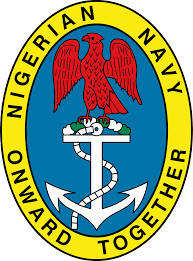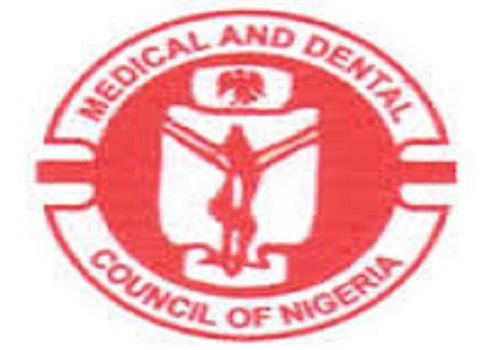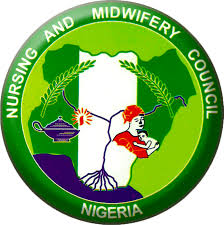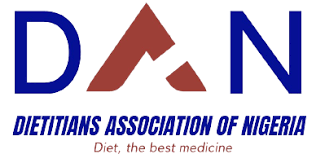THE DEPARTMENT OF PHYSIOTHERAPY,
UNIVERSITY COLLEGE HOSPITAL,
IBADAN.
Email:[email protected]
GSM: 08057479473 01:05:2020
THE PRESIDENT,
PHARMACEUTICAL SOCIETY OF NIGERIA,
PHARMACY HOUSE,
32 FARAMOBI AJIKE STREET,
ANTHONY VILLAGE,
LAGOS.
Dear Sir,
CLINICAL ALLIED HEALTH PROFESSIONALS, NANNM, NUAHP MEMBERSHIP AND CONHESS: THE NEED FOR A NEW DAWN.
I am writing to call for a rebirth in the association, remuneration and operations of all the clinical allied health professionals in the Nigerian health sector. This clarion call became of great significance sequel to the untoward circumstances that have been bedevilling the clinical allied health professionals, especially those employed at the three tiers of government.
It is no longer news that the National Union of Allied Health Professionals (NUAHP) which is the umbrella union for the various clinical allied health professional associations in Nigeria except that of the nurses, also comprises the non-clinical health professional associations. The union has been of some obvious benefits to the various associations, the most significant of which includes but is not limited to the strength in the number of member associations and the unity in diversity of having different member associations.
On the other side of the coin Sir, you will agree with me that the non-membership of the NUAHP by the National Association of Nigerian Nurses and Midwives (NANNM) has remained a significant challenge to both the NUAHP and the NANNM with respect to some past and present events. The separation between the NUAHP and the NANNM has on different occasions had some significant negative impact on the actions and, of course, the results of some unilateral decisions taken by each of the NANNM and the NUAHP at different times. There were both direct and indirect unwanted effects of those actions and decisions on the activities and welfare of the general allied health workers. The results of embarking on industrial actions by one group independent of the other group readily comes to mind in this instance.
However, the realities of today have become different in varying respects from the circumstances that led to the formation and sustenance of the NUAHP. Hence, the benefits and to a larger extent the needs for belonging to the NUAHP by the clinical health professionals can no longer be said, in all honesty, to be in tandem with these realities in the Nigerian health sector.
Also, the gap between the clinical and the non-clinical members of the NUAHP with respect to ideals, goals and transformation is not decreasing in the real sense of it. On the contrary, the gap between the various clinical health professional members of the NUAHP, the NANNM and the Nigerian Medical Association (NMA) is in reality markedly on a continuous decrease, especially with respect to clinical practice. As a result, the need for a re-alignment of the existing inter-professional structure between the various clinical allied health professional associations cannot be more sacrosanct than it is now. There will be greater benefits to the interests of both the clinical members of the NUAHP and those of the NANNM if a new body that will consist of the clinical allied health professionals only is formed.
The entry-level positions into the salary grade system and by implication, to an extent, the salaries of civil servants including those on the CONHESS and the CONMESS are supposed to reflect the number of years spent in acquiring formal education up to first degree level with exceptions in some instances such as the possession of additional professional certifications like COREN for the engineers, ICAN and/or ACCA for the accountants etc. The singular adjustment of the CONMESS by the federal ministry of health under the headship of the former minister for health, Professor Onyebuchi Chukwu, in 2014 altered the hitherto existing balance between the number of years spent in school and the salary earned at entry-level positions in between the health workers on the CONHESS and those on the CONMESS.
The non-inclusion of the CONHESS in the adjustment done for the CONMESS resulted in an impasse that has lasted till today. Although the NUAHP under the umbrella of the Joint Health Sector Unions (JOHESU) used both negotiation and coercive measures, at different times, while trying to have the CONHESS adjusted with the same parameters used forthe CONMESS adjustment, the efforts, however, did not yield the desired results. It can be understood that adjusting the CONHESS would have led to a “direct” increase in salaries for all workers in the health sector on the CONHESS which could have become counterproductive for the government considering the fact that there are workers who do exactly the same type of jobs in the health sector that other workers with the same qualifications do in some other sectors for the same federal government. This might have contributed to the reasons why the wishes of the health workers were not granted. If this is considered, the CONHESS, in essence, becomes an encumbrance to the progress of the clinical allied health professionals. It is only by having a salary structure that is solely for the clinical allied health professionals that can easily erase the possibility of having a repeat of the probable scenario described here.
The clinical health professionals have been clamouring for remuneration based on job evaluation for a long time. If there is a re-alignment of professional associations amongst the clinical members of the NUAHP and the NANNM resulting in the conglomeration of all the various clinical allied health professional associations, that “body” can then be used as the pedestal to call for a specific salary structure for the clinical allied health professionals. Other Issues relating to remuneration for clinical services rendered by all the clinical allied health professionals can also be raised using a unified clinical front. The current state of the remuneration of nurses in relation to other clinical health professionals in Nigeria compared to what obtains in the western world readily comes to mind at this juncture sir.
A re-alignment of the clinical allied health professional associations will bring some positively refreshed dynamics into the relationship between the Nigerian Medical Association and the clinical allied health professionals that has been at its lowest ebb for some years now. Everyone in the health sector knows that inter-professional association harmony is needed for peace to reign in the sector.
Sir, the call for a new body comprising only members of the various clinical allied health professions cannot have been made at a better time considering the various transformations that are sweeping across the health sector, especially for the clinical allied health professions. Examples of the transformations that are taking place are the changing academic curriculums and specialisations that have remarkably evolved and are still evolving to meet today’s realities in the clinical professions. The doctors of optometry (DO), pharmacy (PharmD) and physiotherapy (DPT) are already on ground and rolling. Others might be on their way. The doctorate programmes have not just come with change in curriculums and names but have also come with increased durations of learning.
It is worthy of note that if the curriculums are changing and the number of years spent in school to acquire the evolving qualifications are also increasing, that would directly result in the need for pertinent reviews of the various entry-level positions into the salary grade structures. That, actually, should have been completed by now because some fellows already possess the new qualifications from either within or outside Nigeria and have commenced practising in the system with the acquired skills.
It is obvious that the challenges of the clinical allied health professionals are not limited to being members of the NUAHP and being on the CONHESS. As well, the formation of a clinical allied health professional body and having a specified salary structure for the clinical allied health professionals will not bring an end to the prevailing challenges. However, achieving these feats will take the clinical allied health professionals light years ahead of their current state.
Sir, the process of achieving these feats can receive a huge fillip with a single step –your participation. This brings to the fore the motive for reaching out to you.
In the light of the foregoing, I would humbly request you to use your wealth of experience and influence in matters of the Nigerian health sector in helping to bring a resounding rebirth to the status of all the clinical allied health professionals in this nation. In the end, if this is the case, there will surely be the dawn of a new era for the clinical allied health professionals in Nigeria.
On account of today’s May day celebrations sir, I wish you happy workers’ day!
Long live clinical professionalism in Nigeria! Long live the Federal Republic of Nigeria!
Respectfully yours,
Signed:
Uwumagbe Iyare Brain
Physiotherapy (Certified); Gerontology (Certified); Elderly care (Certified)
CC: ASSOCIATION OF CLINICAL AND ACADEMIC PHYSIOTHERAPISTS OF NIGERIA (ACAPN)
FELIX FANIRAN (PAST PRESIDENT, NUAHP)
MEDICAL REHABILITATION THERAPISTS BOARD OF NIGERIA (MRTBN)
NATIONAL ASSOCIATION OF NIGERIA NURSES AND MIDWIVES (NANNM)
NIGERIAN SOCIETY OF PHYSIOTHERAPY (NSP)
NURSING AND MIDWIFERY COUNCIL OF NIGERIA (NMCN)
PHARMACISTS COUNCIL OF NIGERIA (PCN)





